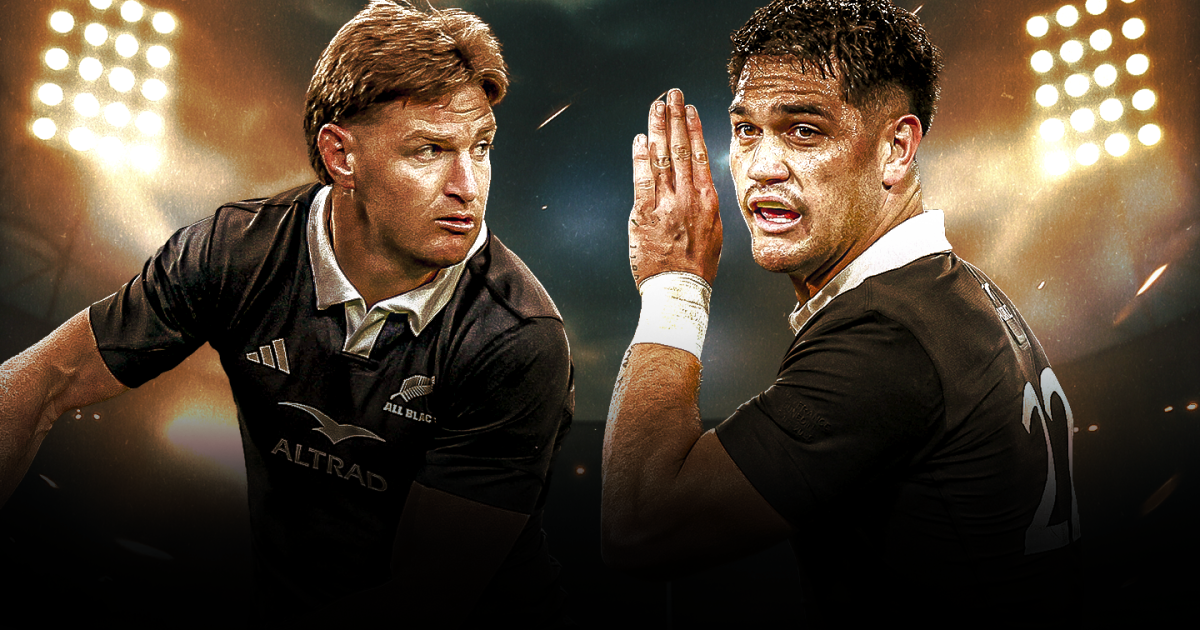The universal and consistent criticism of the Scott Robertson era in his first year was that the All Blacks head coach has erred on the side of caution with his selections and spent too long being risk averse. Specifically, Robertson was reluctant to give game time to aspiring centre Billy Proctor to build depth in what was a scant looking cohort of midfielders.
But for the last Rugby Championship encounter of the year, Robertson made arguably the biggest selection gamble of his tenure by making seven changes from the side that beat the Wallabies seven days earlier in Auckland – the most notable of which was the introduction of Quinn Tupaea in the unfamiliar role of centre.
Tupaea hadn’t started a game at any level at centre for five years, but the decision to play him there in Perth turned out to be inspired as he scored two tries, made countless devastating runs and put in a solid defensive shift as part of the 28-14 victory.
Robertson’s risk delivered high reward as for the first time in his tenure, there was a fluidity and destructive element to the All Blacks midfield.
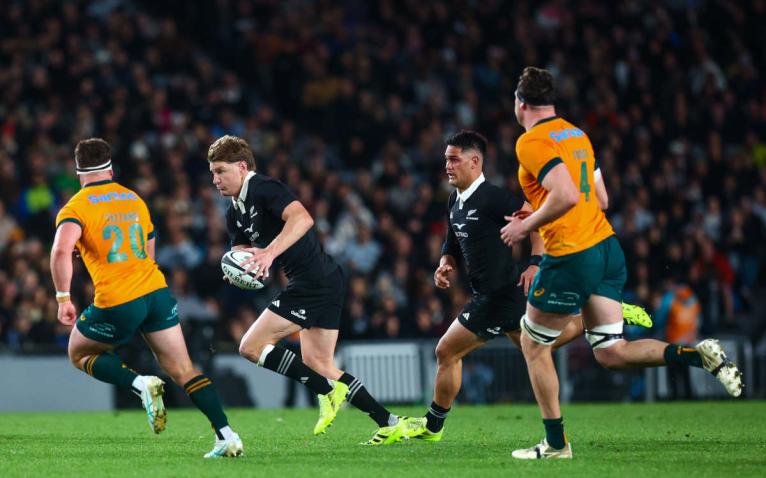 It’s early days but the Jordie Barrett Quinn Tupaea combination is looking up (Photo Craig Butland//Getty Images)
It’s early days but the Jordie Barrett Quinn Tupaea combination is looking up (Photo Craig Butland//Getty Images)
Tupaea and Barrett was not a combination that looked right on paper – especially not when the former hadn’t played in his assigned role since 2019 – but they made it work in Perth.
Tupaea, whose power running and ability to smash and glide past defenders was a defining feature of Super Rugby this year, showed he can be equally destructive in the test arena.
The All Blacks cleverly used him as a battering ram taking the ball at No 12 at times, and at others, they hid him out the back, getting the ball to him in a bit of space where he showed in scoring his second try, that he can be just about unstoppable.
“Really pleased for him, he was great,” Robertson said of Tupaea. “He’s pretty robust, tough, physical. It was great to see him with his ball carry and he will be better for that test.”
But the combination wasn’t all about Tupaea. His presence enabled Barrett to operate more as a second play-maker and he was more involved in directing play and more effective than he’s been all year.
The Barrett-Tupaea combination didn’t necessarily deliver a wow factor as such, but it delivered enough to earn another outing.
The Barrett-Tupaea combination didn’t necessarily deliver a wow factor as such, but it delivered enough to earn another outing.
In 60 minutes together they looked the most promising of all the combinations Robertson has tried and if nothing else, the selectors will be interested in seeing how those two combine when Beauden Barrett returns to No 10 as he’s expected to do for the next Test against Ireland in Chicago.
Part of what will drive this desire to give Barrett and Tupaea more game time together, is the underlying knowledge that the midfield has been an area to date, that Robertson hasn’t been able to get right.
He obviously came into 2025 feeling like he missed a trick last year by not giving Proctor more time. Proctor only played against Fiji and Japan, which was difficult to understand because the form of incumbent centre Rieko Ioane was patchy through Super Rugby Pacific and didn’t improve much in the July series against England.
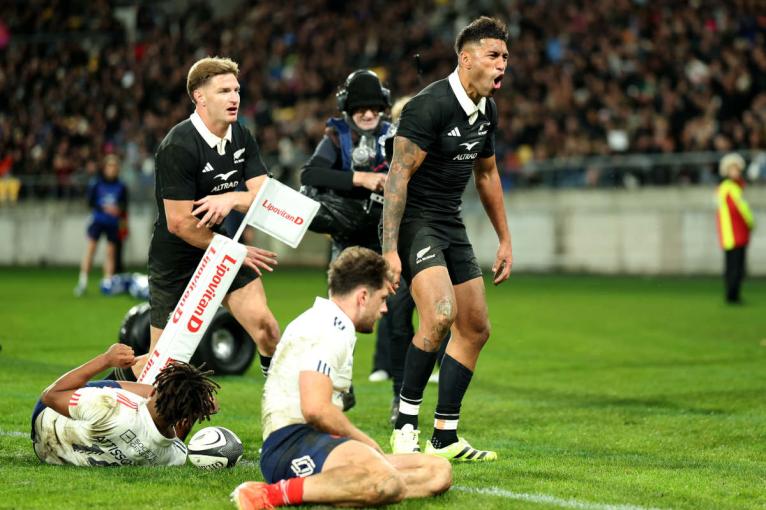 Rieko Ioane has had his moments during 2025 but has been accommodated on the wing and is moving to Ireland with Leinster (Photo by Phil Walter/Getty Images)
Rieko Ioane has had his moments during 2025 but has been accommodated on the wing and is moving to Ireland with Leinster (Photo by Phil Walter/Getty Images)
The statistics showed that Ioane only made 12 passes in the whole of the Blues successful Super Rugby campaign, and when he played against England in the opening tests of 2024, he didn’t make any.
There was one memorable incident in the first Test against England when the All Blacks had a clear overlap and Ioane just needed to draw and pass to Tele’a for a certain try, but he instead tucked the ball under his arm and tried to, unsuccessfully, crash through the defence.
He was dropped for the opening game of the Rugby Championship in favour of Anton Lienert-Brown, but one game later, Ioane was back, holding his starting place for the remainder of the year.
Whatever Ioane lacked as a distributor, the All Blacks felt he made up for with his astute defensive work.
Also, those two had been the All Blacks preferred paring since mid-way through 2022 and Robertson was reluctant, however much Ioane was struggling to facilitate the attack, to break up a long-standing partnership in his first year in charge.
On his Super Rugby form both this year and last, Proctor looked to be the best centre in the country and the one most likely to give the All Blacks the skillsets they needed.
But year two has been a different story, with Robertson seemingly on a mission to do two things – repurpose Ioane as a wing and find a new midfield combination to build through to the World Cup.
The end of year review led Robertson to believe that midfield change was imperative as there was little to no prospect of Ioane developing the decision-making and passing skills the position demands at this level.
For the first eight games of the season, the partnership he backed was Barrett and Proctor – a pairing that had spent a couple of seasons together at the Hurricanes.
On his Super Rugby form both this year and last, Proctor looked to be the best centre in the country and the one most likely to give the All Blacks the skillsets they needed.
Proctor’s game is built on his decision-making, and not only does he know when to pass, he knows how to pass and Robertson, with good reason, had high hopes that the Hurricanes centre would be the one to unlock the full potential of the attacking blueprint.
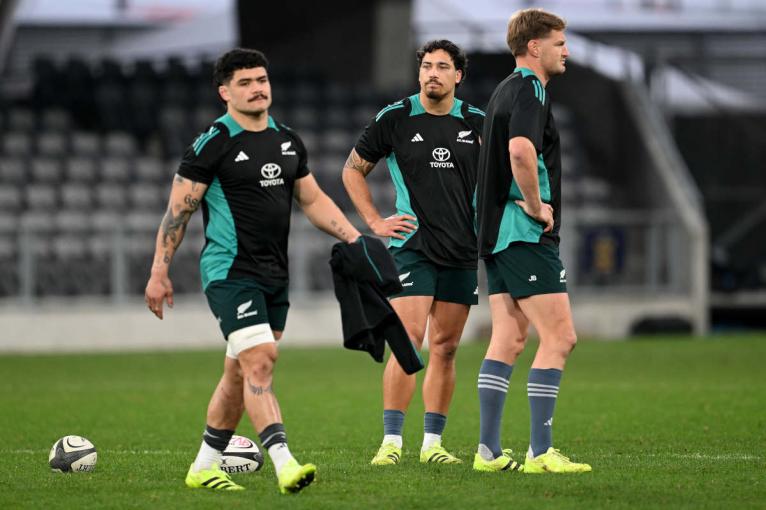 On paper, Billy Proctor and Jordie Barrett seemed like the perfect match but on the field it didn’t quite gel (Photo by Joe Allison/Getty Images)
On paper, Billy Proctor and Jordie Barrett seemed like the perfect match but on the field it didn’t quite gel (Photo by Joe Allison/Getty Images)
However, the Barrett-Proctor combination never quite looked right. In the first Test of the year Proctor was skinned on the outside by French fullback Theo Attissogbe – and there was little of the natural inter-play between the two midfielders that they organically produce at club level.
The partnership didn’t bring the All Blacks’ attack to life and Proctor, individually struggled to adjust to life in the international arena, with his toughest night coming in Wellington against the Boks when he first failed to see a pass opportunity to Leroy Carter that may have resulted in a try, and then did make an attempted pass to the same wing only for it to be intercepted by Cheslin Kolbe who scored from it.
Given how hard Proctor has found adjusting to the international game, it’s a fair question to ask why he wasn’t given greater exposure to it last year?
But the more interesting question to ask now is whether Barrett and Tupaea have suddenly become the combination Robertson is most likely to back not just in the short term, but all the way through to the World Cup? And if so, what does that mean for Proctor?
The answer to the first question is maybe, because the looming presence of Leicester Fainga’anuku must be factored in.
Robertson feels that Fainga’anuku can do a job for the All Blacks on the wing, but he’s been clear that he sees the 25-year-old as a long-term prospect in the midfield – especially as he’s come home from France at 112kg.
Fainga’anuku played his first Test in two years in Perth, starting on the left wing where he was able to show he’s lost none of his ability to bump defenders.
All eight of Fainga’anuku’s Test appearances have come on the wing, but he played a lot at centre for the Crusaders and was also mostly used there by Toulon when he was there between 2023 and June this year.
Robertson feels that Fainga’anuku can do a job for the All Blacks on the wing, but he’s been clear that he sees the 25-year-old as a long-term prospect in the midfield – especially as he’s come home from France at 112kg.
“Midfield is primarily where I feel comfortable, but I’ve played wing the majority of my career,” Fainga’anuku said of his Test return in Perth.
“This week is an awesome opportunity to get back in the flow, back in the wing position, and try to polish the tools that are needed.”
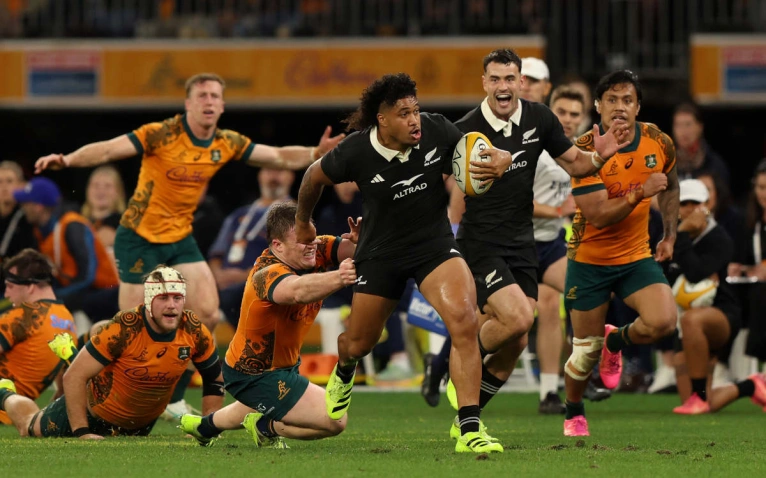 If he goes well, and given his size, Leicester Fainga’anuku could be launched from the bench to add some punch to the midfield (Photo by Janelle St Pierre/Getty Images)
If he goes well, and given his size, Leicester Fainga’anuku could be launched from the bench to add some punch to the midfield (Photo by Janelle St Pierre/Getty Images)
For the remainder of this year the All Blacks seem likely to stick with Barrett and Tupaea, with Fainga’anuku likely to be used off the bench, potentially starting at No 12 – the All Blacks think he can play there effectively – against Scotland.
What his longer term future looks like depends firstly on how well Barrett and Tupaea gel for the rest of the year, and what sort of form Fainga’anuku produces when he returns to the Crusaders in 2026.
But clearly Robertson, who went to great lengths to persuade Fainga’anuku to come home from France, is a big admirer and wants him somewhere in his first choice match day 23.
And Proctor, who Robertson said was “pretty banged up” after the Eden Park Test against the Wallabies, is likely to be Fainga’anuku’s midfield partner in Edinburgh, but probably not seen at any other time on tour as he’s a specialist 13 and therefore has limited value as a bench option.
But like Fainga’anuku, the door remains open to him forcing his way back into the starting lineup, but he’ll have to lift his game to convince Robertson that he’s a better option than Tupaea.
